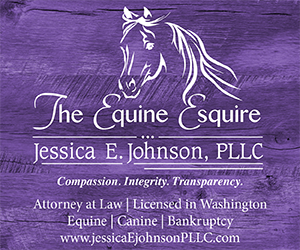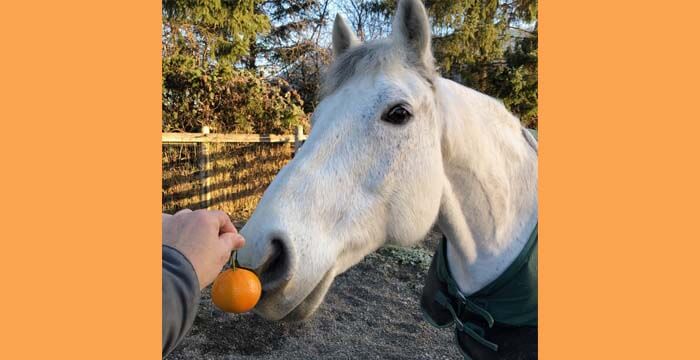Go down the supplement aisle in any feed store and you’ll see supplements from floor to ceiling — all promising to make your horse healthier or perform better.
In the world of supplements, it’s not one-size-fits-all. In a recent survey of horse professionals and non-professionals some interesting statistics arose: 12% of those surveyed overfeed supplements by 1.5 to 2 times the recommended amount. 82% were not satisfied with the seller’s product knowledge. 89% of those surveyed were unhappy with the limited access to independent nutritional advice. As our horses’ healthcare advocates, we need to ask some questions. How can we find out what our horses really need?
There are several ways to find out what your horse needs for minerals and other supplements. The first is a forage test, which many of you may already do. A forage test gives you a current view of what the horse’s current diet is lacking. Hay and forage producers conduct forage testing, so it should be easy to get a copy of their findings. Unfortunately, forage test results will fluctuate from producer to producer and even field to field. They won’t show any current mineral imbalances. Using a forage test gets close but does not give us all the needed details.
The second option is mineral and hair analysis. Collect a small quantity of mane hair and send it to a certified lab that will provide volumes of information. Among the many advantages of a hair mineral analysis is its accuracy in revealing the tissue levels of minerals in the horse. A word of caution regarding labs: make sure the lab you work with is certified to test equine samples. Some naysayers will tell you you’re looking at old information, but actually, it gives a comprehensive report on 15 nutritional elements, 8 toxic metals, 7 significant mineral ratios, 9 toxic ratios, and an additional 15 elements.
A word on mineral ratios—they are the critical piece of the puzzle when it comes to the success or failure of your feeding and supplement program. Minerals have interrelationships with other minerals. For example, calcium and magnesium, zinc and copper, and calcium and phosphorous are all interrelated. If their ratios aren’t balanced, then other minerals aren’t being absorbed and could cause health issues.
Armed with your analysis in hand, can you go to the feed store and get what we need? Not exactly. It’s better to review the report with a veterinarian or nutritionist who can help you connect all the dots.
When selecting supplements, it’s important to read all the ingredients and not just the top three or four. Feed and supplement manufacturers can list ingredients in several ways. For example, what do ferrous sulfate, ferrous gluconate, and ferrous fumarate all have in common? They are iron and will be listed separately on an ingredients list. This is extremely important when calculating the daily total requirement for a mineral. And you need to account for what’s in the feed and all supplements. I’ve seen clients that were feeding three times the daily requirement for iron.
All these calculations may seem complicated and time-consuming. Is there an easier way? Balanced Eco Solutions (www.balancedecosolutions.com) offers a unique service that takes the guesswork out of equine supplements. Through Balanced Eco Solutions you can receive a hair and mineral analysis from the only certified lab in the United States. As part of the service, the analysis is reviewed by their in-house nutritionist. They review both the report and your current feeding program. Based on this information they provide a final summary with diet and supplement recommendations. If necessary, they blend a custom supplement specifically to meet the needs of your horse.
Here’s the benefit of a custom supplement. Remember our earlier discussion on mineral ratios? When Balanced Eco Solutions builds a custom supplement, they create a blend of chelated and non-chelated minerals. The chelated minerals go directly to the problem that needs correcting while the non-chelated work with the other minerals to balance the ratios or relationships between individual minerals. Chelation is the chemical process by which a mineral (iron, cobalt, copper, zinc, manganese) is combined with amino acids and peptides. A chelated mineral is more bioavailable and is absorbed faster than non-chelated minerals.
The cost of a custom mineral blend is surprisingly low, averaging $70 to $95 a month depending on what is needed. If you are feeding a joint or other supplement, they can include those in the blend as well. So instead of feeding two or three supplements you are only feeding one.
Finally, there’s a growing problem of over-supplementation. The attitude that “more is better” is not the case when it comes to supplements. As you have seen, equine nutrition is a delicate balance. Too much of one mineral can rob the body of others creating even bigger issues.
An effective program should start with a hair analysis, which will create a baseline of your horse’s health. Once the baseline is available you then have the tools for a supplement program that will bring the most benefit to your horse.
For more information about Balanced Eco Solutions visit www.balancedecosolutions.com or call 866-501-6416.






